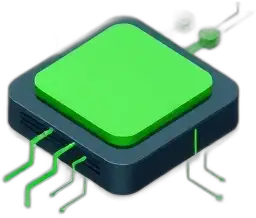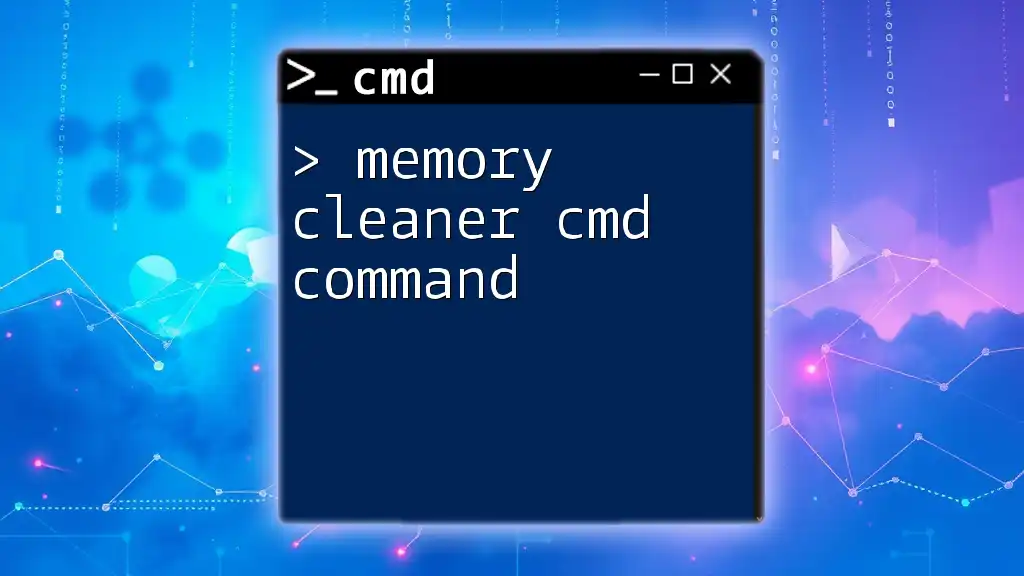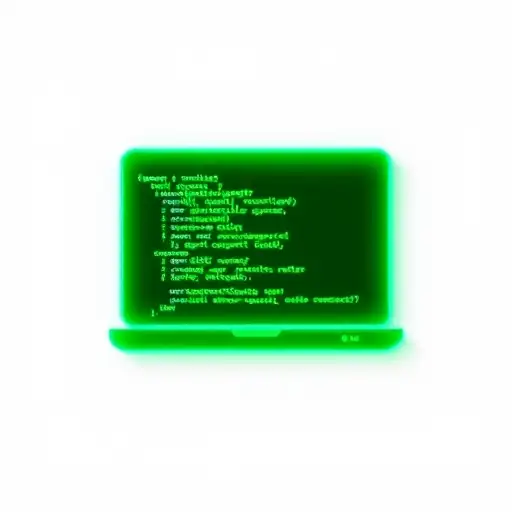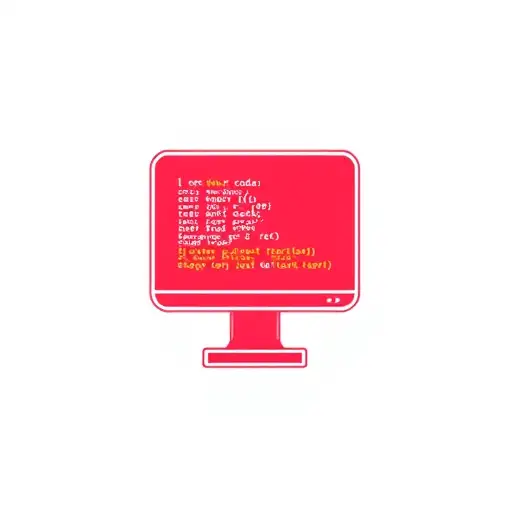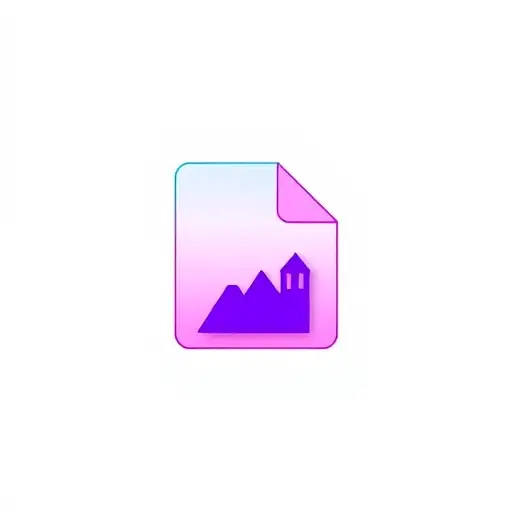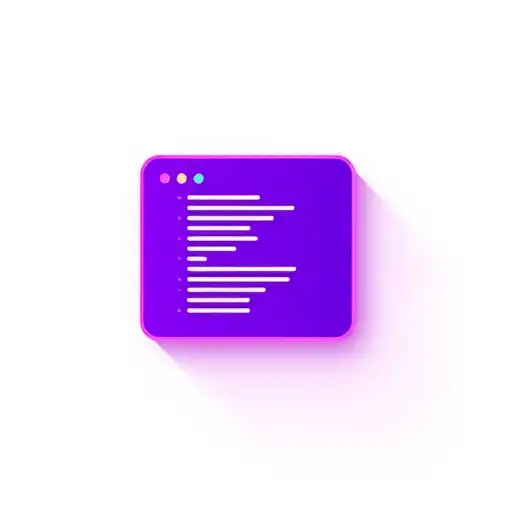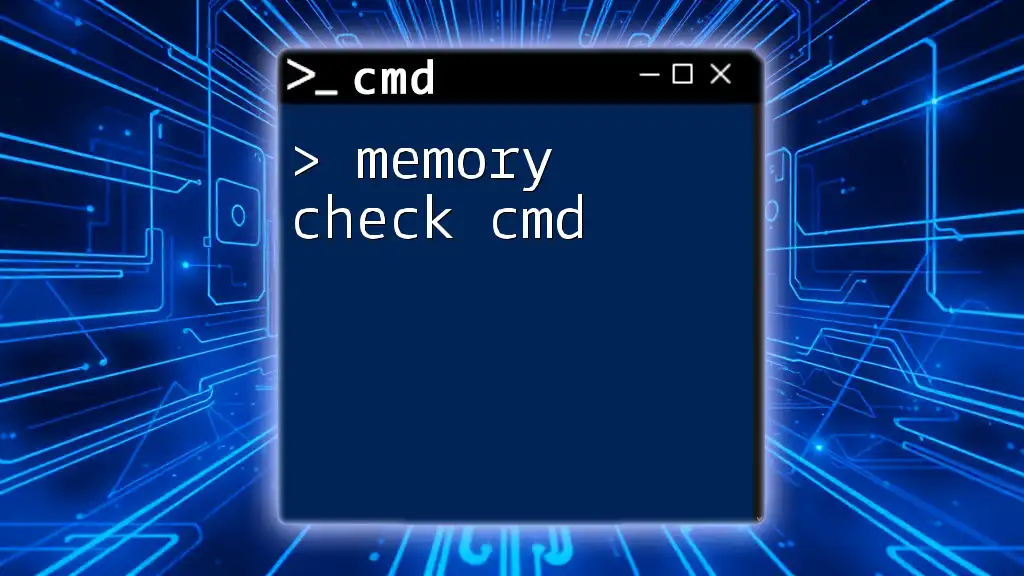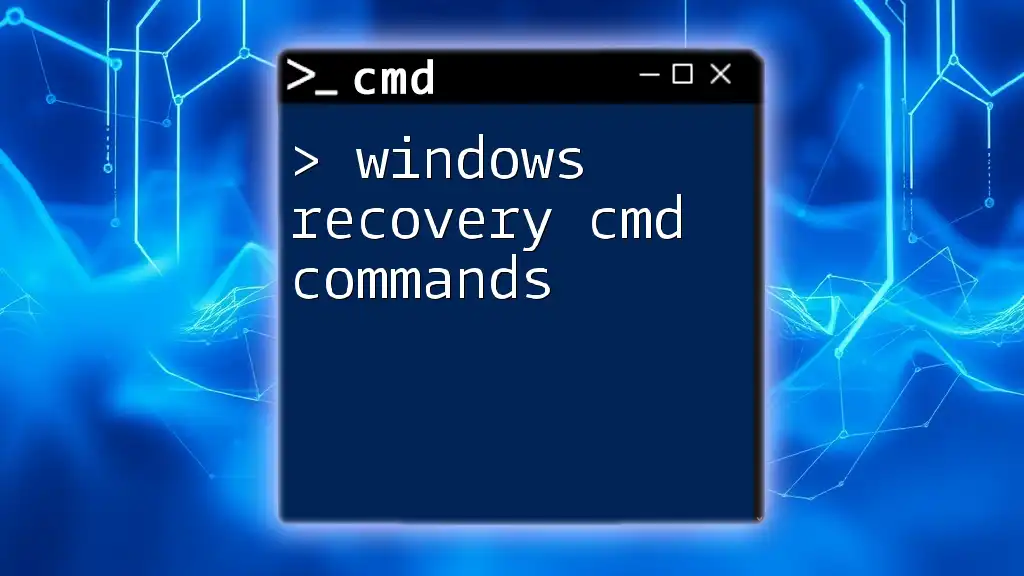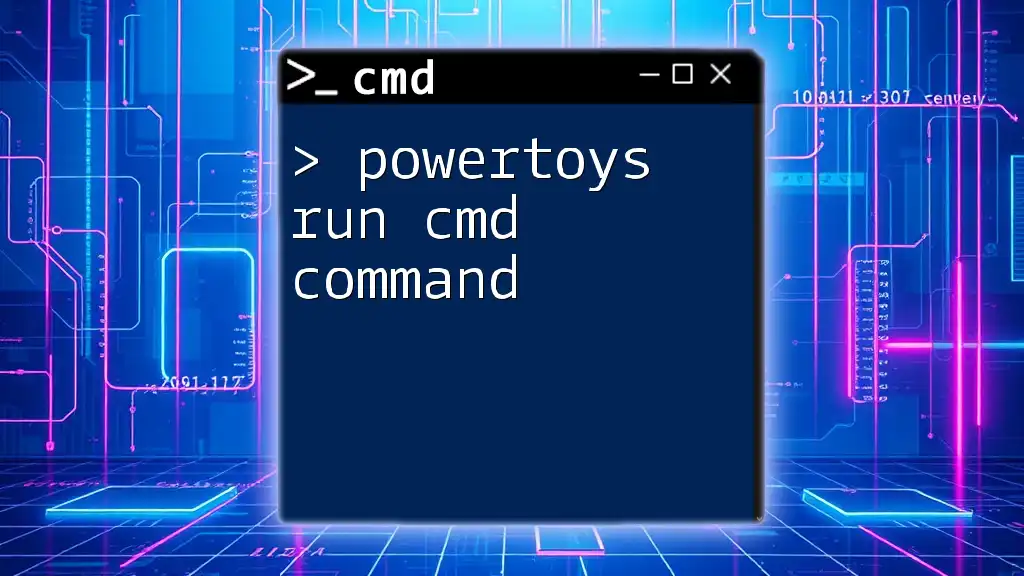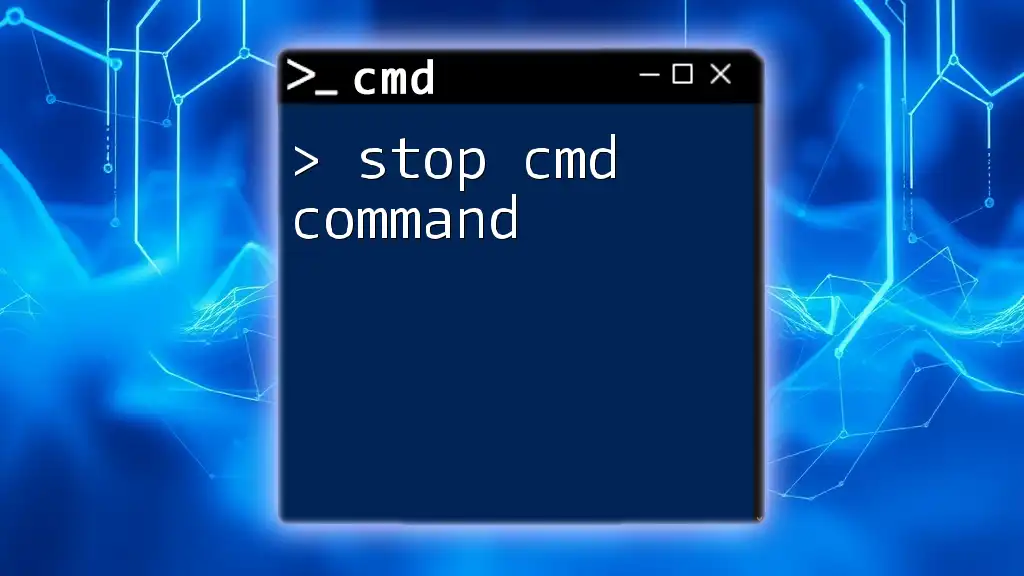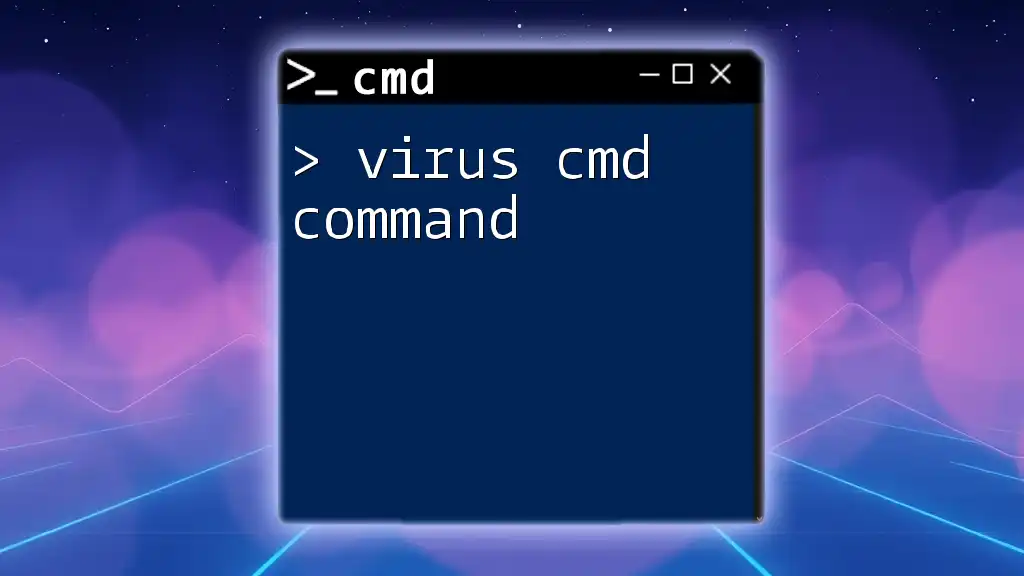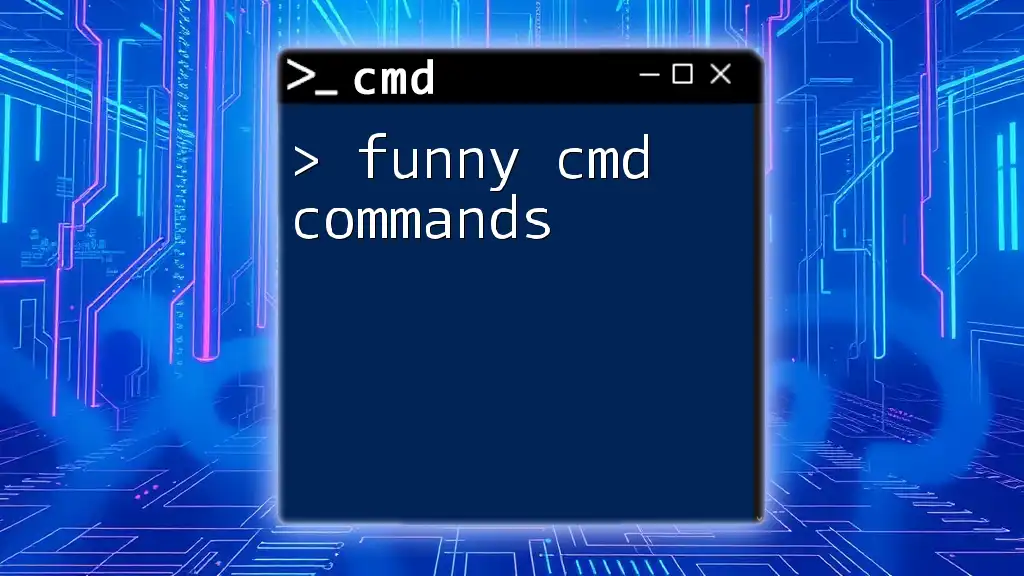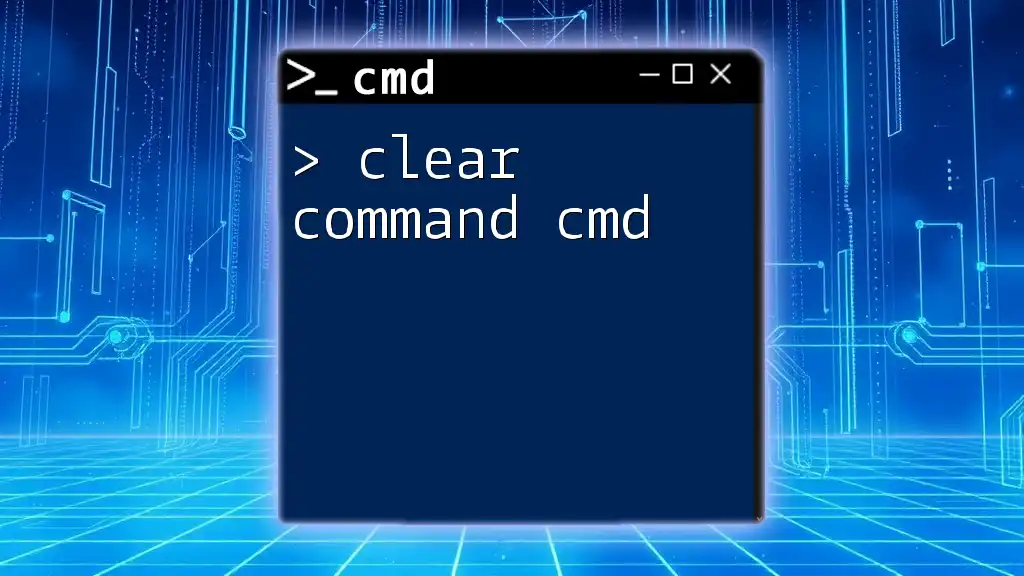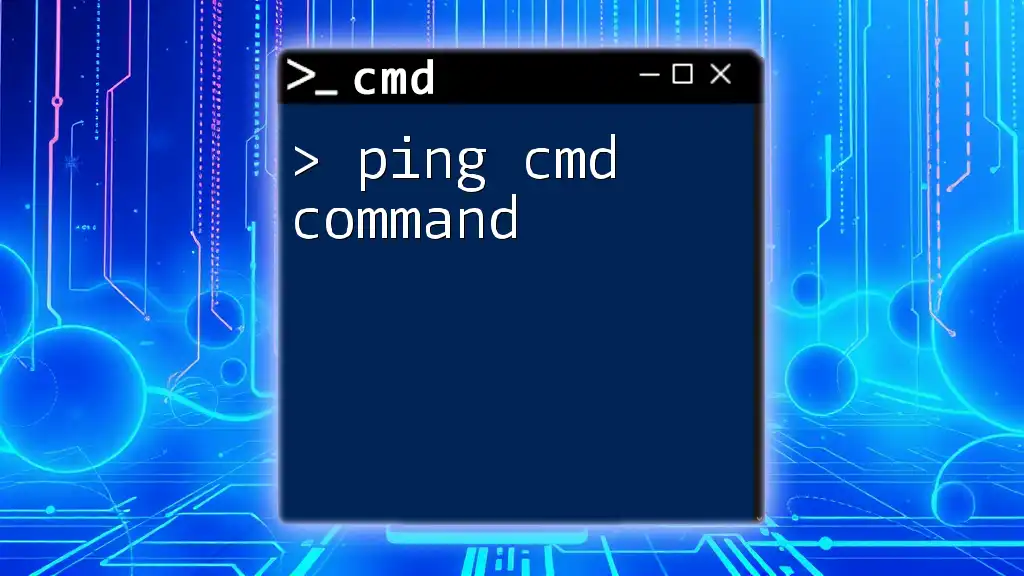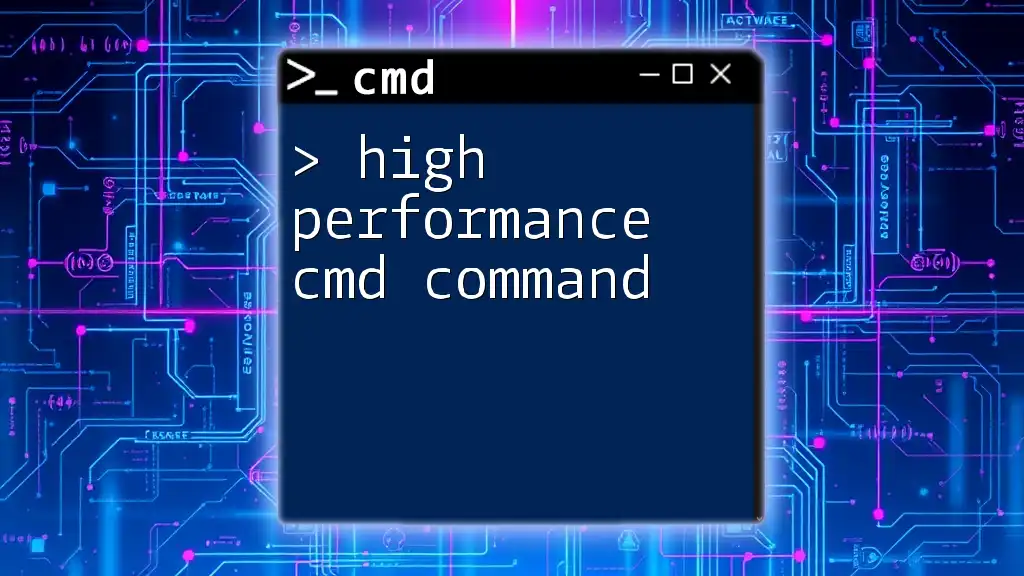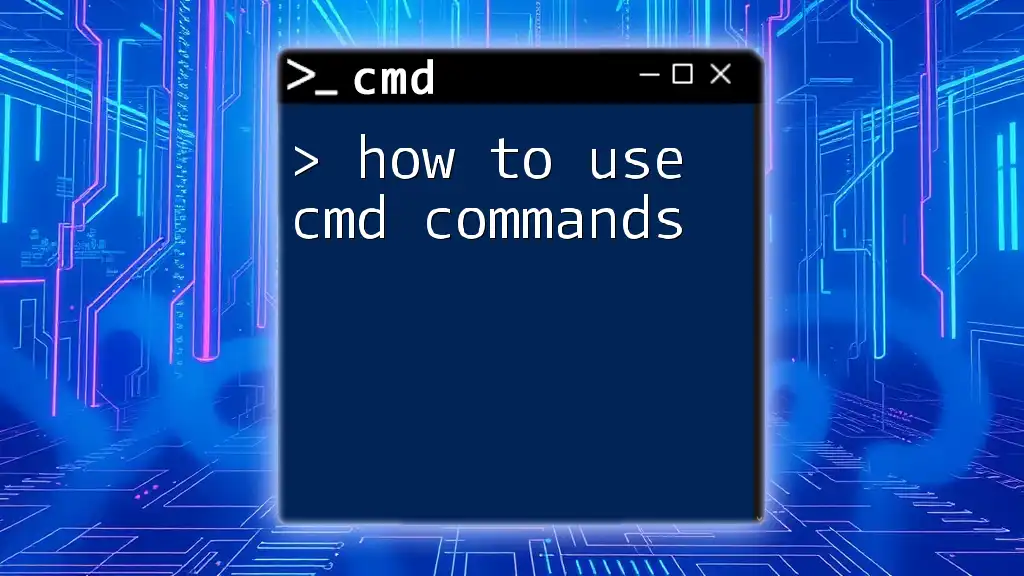The memory cleaner cmd command allows users to free up RAM by clearing unnecessary cache and process data, enhancing system performance.
echo 1 > \\.\globalroot\device\harddiskvolume2\pagefile.sys
Understanding Memory Usage
What is Memory?
Memory refers to Random Access Memory (RAM), a critical component of computer systems that temporarily stores data for quick access. RAM holds the operating system, application programs, and currently processed data, allowing for smooth and efficient computer operations. The more RAM your system has, the better it can handle multiple tasks simultaneously.
Types of Memory Usage
Memory usage can typically be categorized into physical memory and virtual memory. Physical memory refers to RAM installed in your computer, while virtual memory is a portion of the hard drive allocated to mimic additional RAM. Understanding these types is crucial for effective memory management.
Symptoms of High Memory Usage
Common indicators of high memory usage include:
- Slow Performance: Programs take longer to open and respond.
- Application Crashes: Frequently used applications may unexpectedly close.
- System Lag: The system becomes unresponsive, especially with multiple applications running.
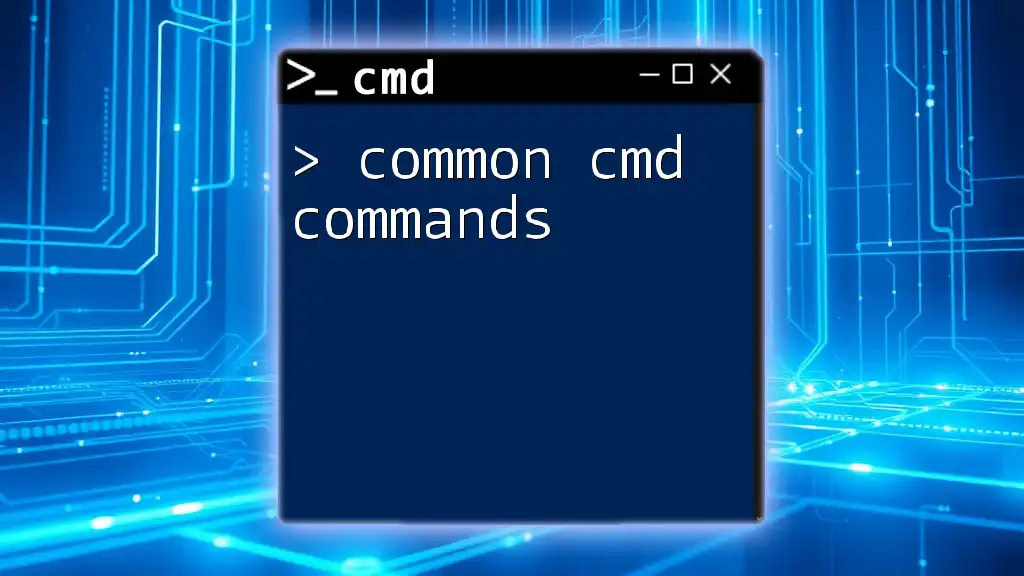
Introducing the Memory Cleaner Command
What is the Memory Cleaner CMD Command?
The memory cleaner cmd command is a command-line tool designed to free up RAM by clearing out unused or unnecessary data residing in memory. This command can help improve your system's responsiveness and overall performance, particularly after running memory-intensive applications.
Key Functions of the Memory Cleaner Command
The primary functions of this command include:
- Freeing Up RAM: It identifies and frees up memory not currently in use by active processes.
- Optimizing Performance: By cleaning up memory, it allows your system to allocate resources more effectively to applications that require them.
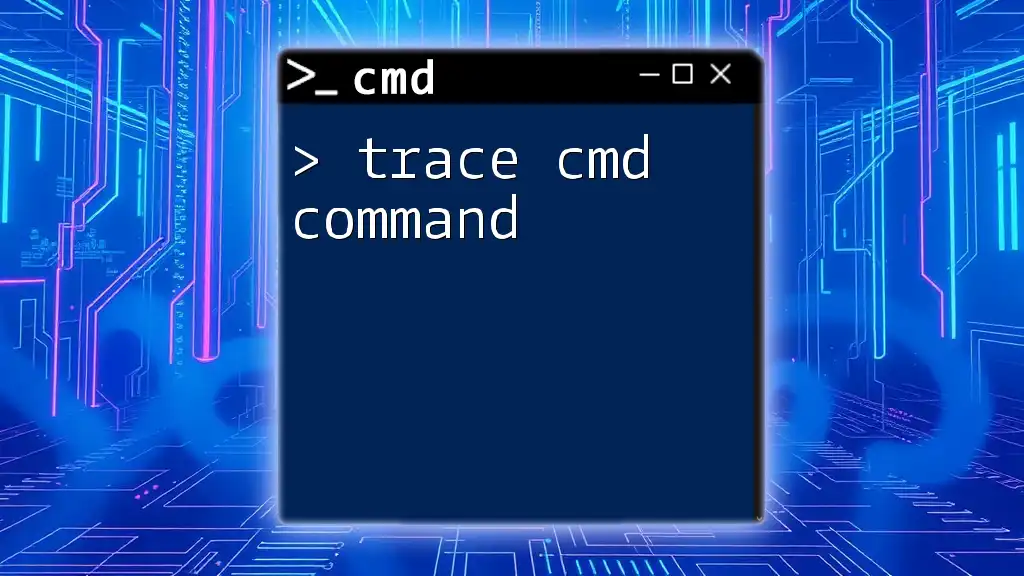
How to Use the Memory Cleaner CMD Command
Pre-requisites
System Requirements
Before using the memory cleaner cmd command, ensure your system meets certain requirements, such as:
- Operating System Compatibility: The command should be compatible with your version of Windows.
- Sufficient Disk Space: Although this command clears RAM, having enough free disk space is essential for performance.
Admin Privileges
Running this command typically requires administrator access. Ensure you have the necessary privileges to execute commands that affect system memory.
Basic Syntax of the Command
The basic syntax for the memory cleaner command generally follows this structure:
memory-cleaner-command [options]
Common options may include various flags that modify how the command operates, enhancing its functionality.
Executing the Memory Cleaner Command
Step-by-Step Instructions
-
Opening Command Prompt
To begin, open the Command Prompt with Administrator privileges. You can do this by searching for "cmd" in the Start menu, right-clicking on it, and selecting "Run as administrator." -
Typing the Command
Once in the Command Prompt, you can type the command. An example command might look like this:CleanMem.exeThis command initiates the memory cleaning process. Ensure you replace `CleanMem.exe` with the exact command you want to execute.
-
Interpreting Results
After executing the command, pay attention to the output. Look for messages that indicate how much memory was cleared and the impact on system performance. This output can guide you on how effective the cleaning process was.
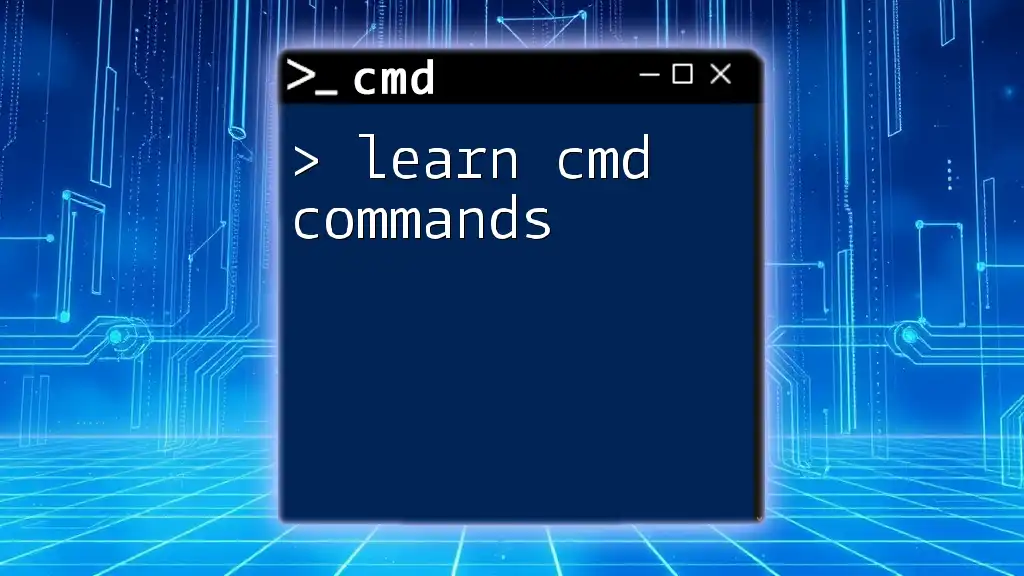
Advanced Tips for Memory Management
Scheduling Memory Cleanup
For better efficiency, consider automating your memory cleanup tasks. Using Task Scheduler in Windows, you can set specific times for the memory cleaner command to run, ensuring your system remains optimized without your intervention.
Combining CMD Commands
You can enhance the capabilities of the memory cleaner command by chaining it with other CMD commands. For example, using the && operator allows you to run multiple commands sequentially. An example might look like this:
CleanMem.exe && echo Memory cleanup completed!
This command cleans the memory and then outputs a confirmation message.
Third-Party Tools vs CMD Commands
When deciding between using CMD commands and third-party tools for memory management, consider the following:
- CMD Commands: These are lightweight, often built into Windows, and offer a straightforward approach to memory management without additional installations.
- Third-Party Tools: While these can offer more features and user-friendly interfaces, they may require more system resources and could pose security risks if not sourced from reputable developers.
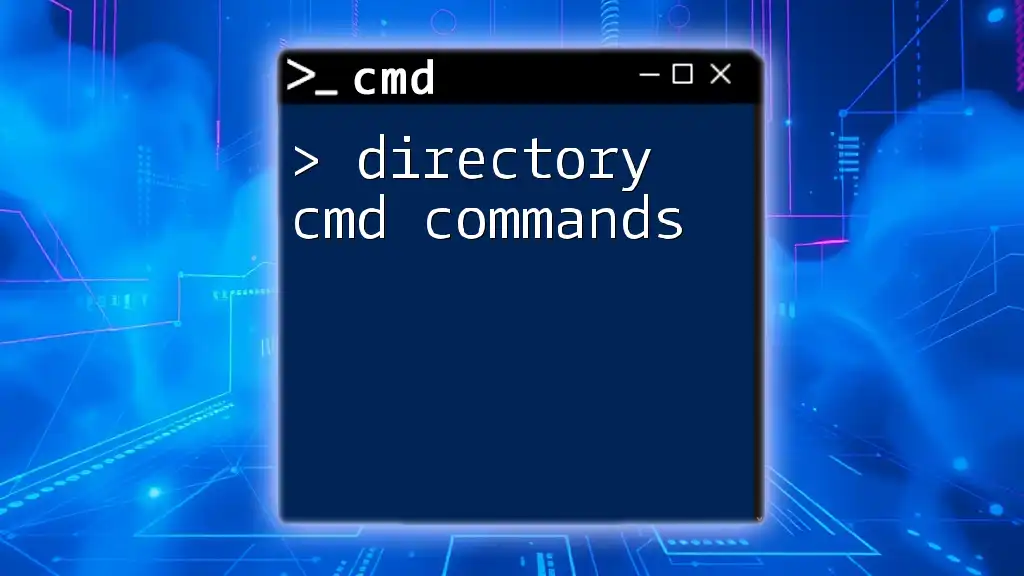
Troubleshooting Common Issues
Errors and Solutions
Users might encounter various error messages while using the memory cleaner command. Common issues include:
- "Access Denied": Ensure that you are running CMD as an Administrator.
- "Command Not Found": Verify that you typed the command correctly and that it is available on your system.
Performance Monitoring
Use Task Manager to monitor your system's memory usage effectively alongside the memory cleaner command. This built-in tool provides real-time data on memory consumption, allowing you to see the impact of your cleanup efforts.
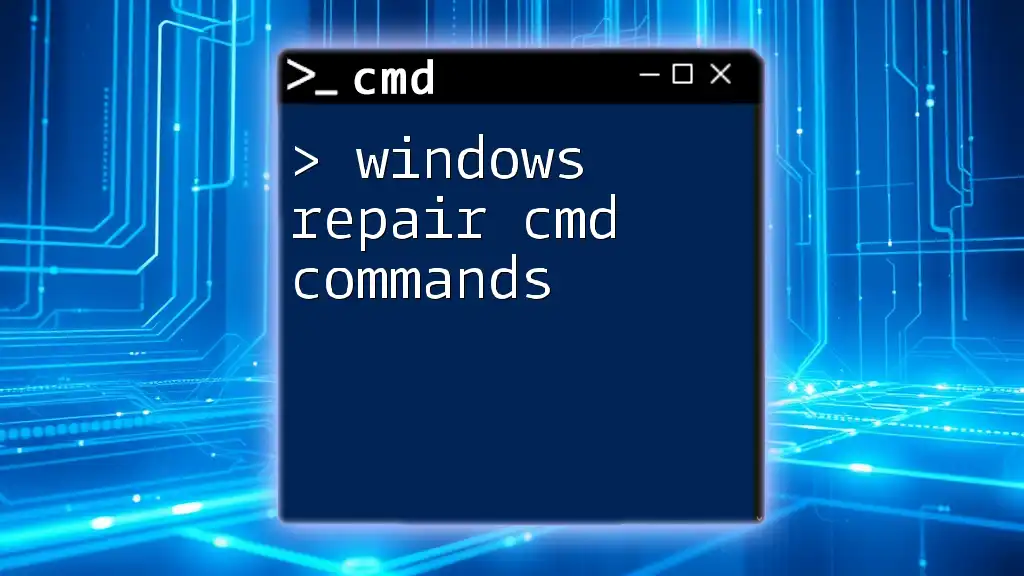
Conclusion
The memory cleaner cmd command is an invaluable tool for maintaining optimal system performance. Regularly using this command can lead to a more responsive and efficient computing experience. With the understanding gained from this guide, you are equipped to effectively manage your computer's memory and solve common issues.
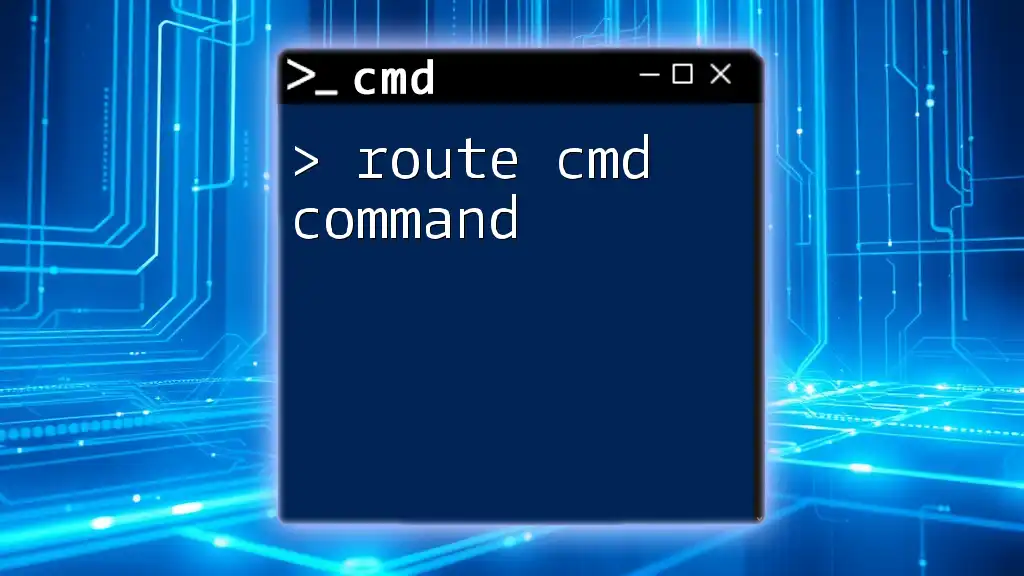
Call to Action
Join our community for more insights into CMD commands and memory management strategies. Explore our resources and deepen your understanding of how to maximize your system's performance.
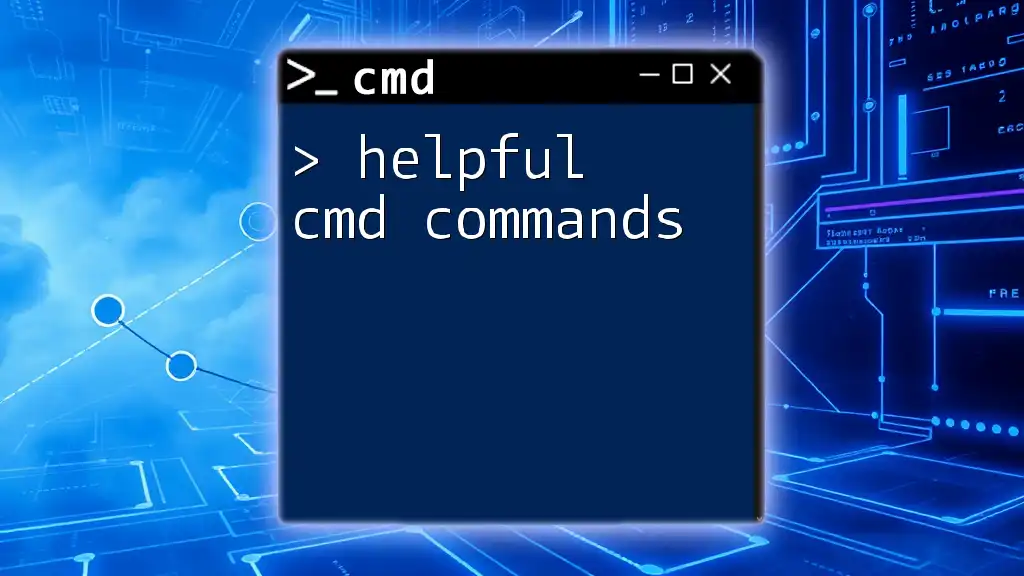
FAQ Section
What is the best way to clean memory using CMD?
Utilizing a dedicated memory cleaner command, followed by monitoring performance through Task Manager, is highly effective.
Are there risks associated with using the memory cleaner command?
As long as you ensure administrative privileges and proper command syntax, the risks are minimal. Be cautious with commands that can change system settings.
How often should I run a memory cleanup?
It is advisable to perform memory cleanups regularly, especially after running memory-intensive applications or whenever you notice a decline in performance.
